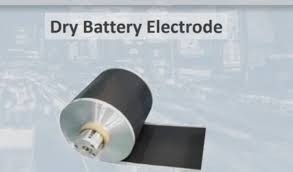
Breaking News
 [Off Grid Build] DIY Rotary Sieve (Trommel) For Separating Stone from Earth (Making Gravel)
[Off Grid Build] DIY Rotary Sieve (Trommel) For Separating Stone from Earth (Making Gravel)
 Exposing the Venezuela Regime Change Scam - with Richard Grove
Exposing the Venezuela Regime Change Scam - with Richard Grove
 California just passed a shocking law to grab your idle Bitcoin
California just passed a shocking law to grab your idle Bitcoin
 Scientists say recent advances in Quantum Entanglement...
Scientists say recent advances in Quantum Entanglement...
Top Tech News
 Kawasaki's four-legged robot-horse vehicle is going into production
Kawasaki's four-legged robot-horse vehicle is going into production
 The First Production All-Solid-State Battery Is Here, And It Promises 5-Minute Charging
The First Production All-Solid-State Battery Is Here, And It Promises 5-Minute Charging
 See inside the tech-topia cities billionaires are betting big on developing...
See inside the tech-topia cities billionaires are betting big on developing...
 Storage doesn't get much cheaper than this
Storage doesn't get much cheaper than this
 Laser weapons go mobile on US Army small vehicles
Laser weapons go mobile on US Army small vehicles
 EngineAI T800: Born to Disrupt! #EngineAI #robotics #newtechnology #newproduct
EngineAI T800: Born to Disrupt! #EngineAI #robotics #newtechnology #newproduct
 This Silicon Anode Breakthrough Could Mark A Turning Point For EV Batteries [Update]
This Silicon Anode Breakthrough Could Mark A Turning Point For EV Batteries [Update]
 Travel gadget promises to dry and iron your clothes – totally hands-free
Travel gadget promises to dry and iron your clothes – totally hands-free
 Perfect Aircrete, Kitchen Ingredients.
Perfect Aircrete, Kitchen Ingredients.
 Futuristic pixel-raising display lets you feel what's onscreen
Futuristic pixel-raising display lets you feel what's onscreen
Tesla's Maxwell Dry Battery and a Five Year Lead on the World

Maxwell has a path with 15-25% improvement every 2-3 years. This should lead to 500 Wh/kg by 2027. This would give Tesla a 5 year battery lead on the rest of the world. Tesla could get a three year pure technology lead and a two year lead by more rapidly scaling production at its gigafactories. Tesla could reach $50 per kilowatt-hour with 500 Wh/kg. This would mean half the weight in batteries while producing the save level of energy as the best 250 Wh/kg batteries of today. This would mean $4000 instead of $12000 in batteries for an 80 kWh battery pack. This would enable far better electric trucks. Electric semi-trucks need to use up nearly half of their cargo capacity on heavy batteries. Energy dense batteries will make longer range electric trucks with competitive cargo capacity. The batteries could also enable electric planes to be competitive flying 100-200 passengers from Los Angeles to San Francisco. The batteries will make new disruptive products feasible. Japan and China's government battery programs have each targeted 500Wh/kg. The US DOE has a similar battery program called Battery500. There are various programs mostly focused around solid state batteries and lithium sulfur batteries. Both have had some commercialization with gadgets or applicances but not cars. They are targeting the same kind of performance as Tesla's Dry battery technology. However, it currently appears that Tesla could have an advantage getting the new technology into cars and using them to lower costs and boost performance.



